Some of the links in this post may be affiliate links.
Succulents are all the rage right now, and I want to share some photos and care tips on 10 amazing hanging succulents and cactus plants. I have owned and grown all of these trailing beauties at different points in my life and am happy to share my own tips!

Here is the list of trailing succulent plants that I selected to feature in this post:
- Senecio rowleyanus – String of Pearls
- Senecio radicans – String of Bananas
- Ceropegia woodii – String of Hearts
- Sedum morganianum – Burro’s Tail
- Ceropegia woodii variegata – Variegated String of Hearts
- Kalanchoe uniflora
- Rhipsalis spp.
- Schlumbergera spp. (Christmas Cactus & Thanksgiving Cactus)
- Fishbone Cactus
1. Senecio rowleyanus – String of Pearls
More people have killed this plant than probably any other, including myself in the past! I’ve learned the secrets and and what this plant likes, so I no longer have any issues. The more correct scientific name for this plant is Curio rowleyanus.
A surefire way to kill this plant quickly is to grow it in low light and keep it wet.
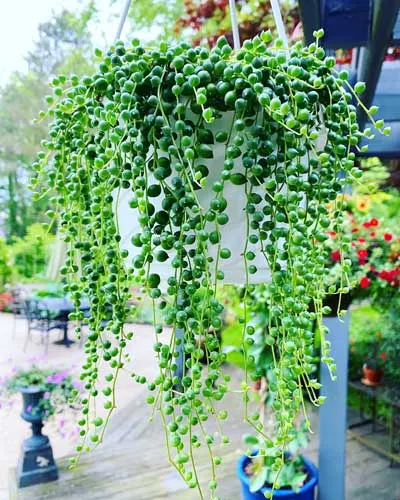
Some key tips that I’ve found that make it easy (if I dare say that word) to grow String of Pearls include:
- High light. Give this plant your sunniest window! And keep it RIGHT in front of the window.
- Super duper quick drainage is a MUST. I recommend 1 to 2 parts of succulent soil and 1 part 1/4″ pumice mixed together. Experiment and see what best works for you. Everyone’s conditions are different.
- Allow the soil to almost dry out completely, but not to the point where the pearls shrivel and get stressed.
In the summertime, I like to place my plant outdoors. Be sure to keep the plant in the shade for several days so it can acclimate to the light outdoors otherwise it will BURN very quickly!
This goes for any plant. Not just String of Pearls. Only then can you can gradually introduced some sun.
I’ve seen too many people make this mistake and they quickly burn and ruin their plants.
For a more detailed care account of how to care for this plant, check out my blog post on String of Pearls.
2. Senecio radicans – String of Bananas
If you have failed miserably in trying to care for String of Pearls, you should try my tips above…or you can also try growing String of Bananas. Known as Senecio radicans, it is more correctly Curio radicans.
It is named String of Bananas, as you can imagine, because the leaves look like miniature bananas instead of the rounder “pearls” of Senecio rowleyanus.
All the same care tips as String of Pearls apply! Except String of Bananas is definitely a lot less finicky.
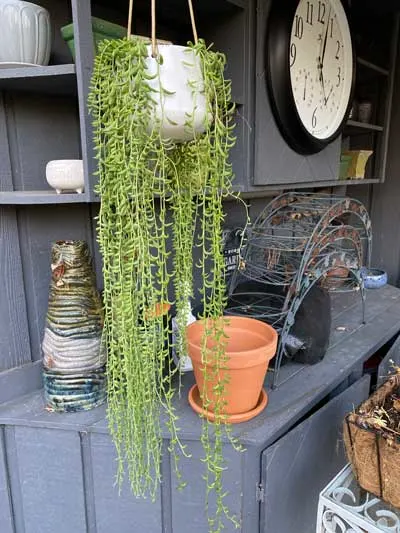
3. Ceropegia woodii – String of Hearts
This is a very fun to grow trailing plant that can grow several feet long, and is also very easy to propagate. Many people grow this plant in much lower light than it likes. It will still grow, but the distance between the leaves will be larger and the plant will appear more sparse.
If you grow these in at least half a day of direct sun, you will get a much more full, vigorous plant.
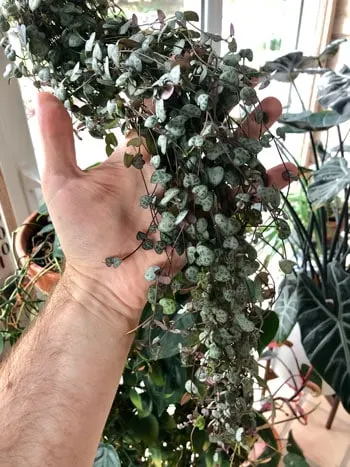
For more details on this plant, check out my blog posts on String of Hearts Care and also a special post on different ways to propagate String of Hearts.
4. Sedum morganianum – Burro’s Tail
This beauty does wonderfully indoors if you can provide very bright light, or even bright, filtered sun. Be careful of really hot mid-day sun.
Like any succulent, be careful of watering too much during the winter time. Keep this plant on the drier side during the winter to avoid rotting.
During the growing season, when light is higher and temperatures are higher, it is much less of a concern.
The leaves are very delicate and break off VERY easily, which is why I don’t grow this plant anymore, but nonetheless can grow into a spectacular specimen over time!
You can easily use the single, broken leaves to propagate. Simply place them on top of a pot of moist soil, and they will form roots and new plants.
A popular cultivar is Sedum morganianum ‘Burrito’. Common names for this plant include Burro’s Tail or Donkey’s Tail succulent.
5. Ceropegia woodii variegata – Variegated String of Hearts
I don’t have much patience for some variegated plants, but this one sure is beautiful! The down side is that it is much slower growing than it’s non-variegated version (which I personally prefer).
As with any variegated plant, they need more light in general than their non-variegated counterparts.
Here you see the variegated version on the left and the non-variegated on the right.
6. Kalanchoe uniflora
You may be familiar with the many Kalanchoes out there, but did you know there is a trailing one? It is called Kalanchoe uniflora. It has beautiful trailing, succulent leaves as well as stunning flowers!
My own plant has grown quite long but it has not bloomed yet. Be sure to give your plant at least half a day of sun.
7. Othonna capensis – Ruby Necklace Plant
I absolutely adore my own Ruby Necklace. Depending on the amount of light that it gets, and any stressors such as drought, it will range in color anywhere from green to purplish red.
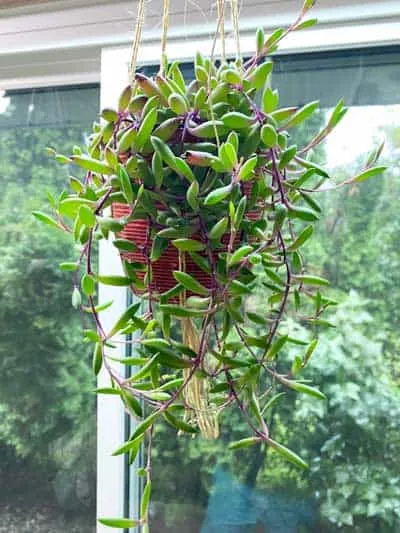
Here is one that receives more light, and look at the beautiful color! You can clearly see the plant on the left receives a lot more sun than the plant on the right.
8. Rhipsalis spp.
There are various Rhipsalis species, and these are epiphytic jungle cacti. Yes, they are technically cactus, but the jungle version and not the kind from the desert!
Since they are epiphytes, this means they grow on other plants, such as on tree branches.
I have 3 species of Rhipsalis, and two are shown in the photo below. I don’t have a blog post on the care of these plants yet, but I will at some point.
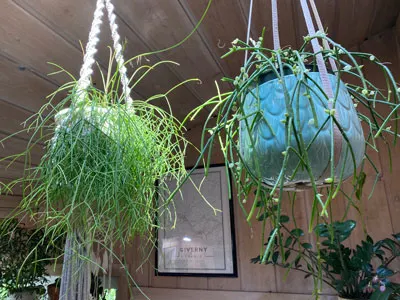
I actually grew the two Rhipsalis specimens in the photo above from cuttings. Like any succulent cuttings, allow the cuttings to dry and callous over for a few days, and then pot them up in your soil mix.
Drying the succulent cuttings for a few days and letting the cuts callous over helps to prevent rotting.
Don’t miss my blog post on Rhipsalis varieties that will sure to delight you!
9. Schlumbergera spp. (Christmas Cactus & Thanksgiving Cactus)
Did you know that Christmas Cactus and Thanksgiving Cactus are different species? These plants are often mislabeled, but fortunately, the care is identical!
Like Rhipsalis, Schlumbergera plants are also jungle cacti.
They do really well in bright, filtered sun. Personally, I’ve had great success with these plants in front of an Eastern exposure window, but I’ve also grown them in Southern windows as well.
Mine currently is hanging under a skylight and it is thriving and blooming well every year in this spot.
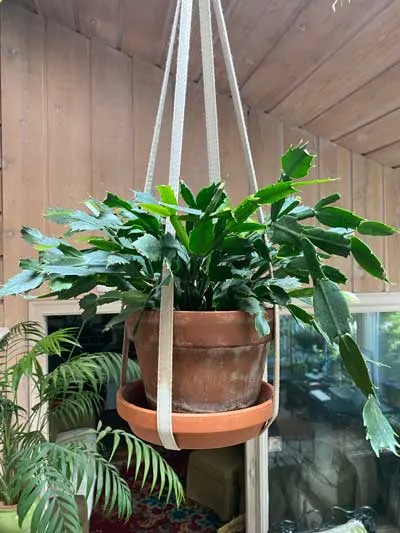
They are quite versatile with light, but will not bloom if there isn’t enough light.
I grew the Thanksgiving Cactus in the photo above from cuttings from my late grandmother’s plants, and I think of her every time I see it!
Be sure not to miss my Christmas and Thanksgiving Cactus blog post where I discuss all care aspects, including the secrets to getting your plants to bloom reliably every year.
10. Fishbone Cactus
Another epiphytic jungle cactus (I kind of have an obsession with them), is the Fishbone Cactus and it has amazing foliage!
You can see where the common names of Fishbone or Zig Zag cactus come from.
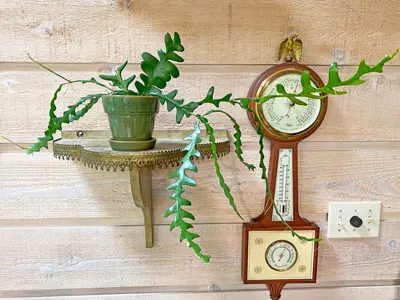
And you guessed it, I also grew this one from cuttings. (It pays to have good plant friends).
There is often confusion over which species people have of this plant, and the easiest way to tell is from the color of the flowers because the foliage looks very similar.
Check out my care post on the unusual plant that is the Fishbone Cactus.
Did you enjoy this post on hanging succulents? Do you have any other favorites? Comment below. I’d love to hear! And if you want to make your own hangers for your hanging succulents, check out my tutorial on how to make your own DIY easy macrame plant hanger.


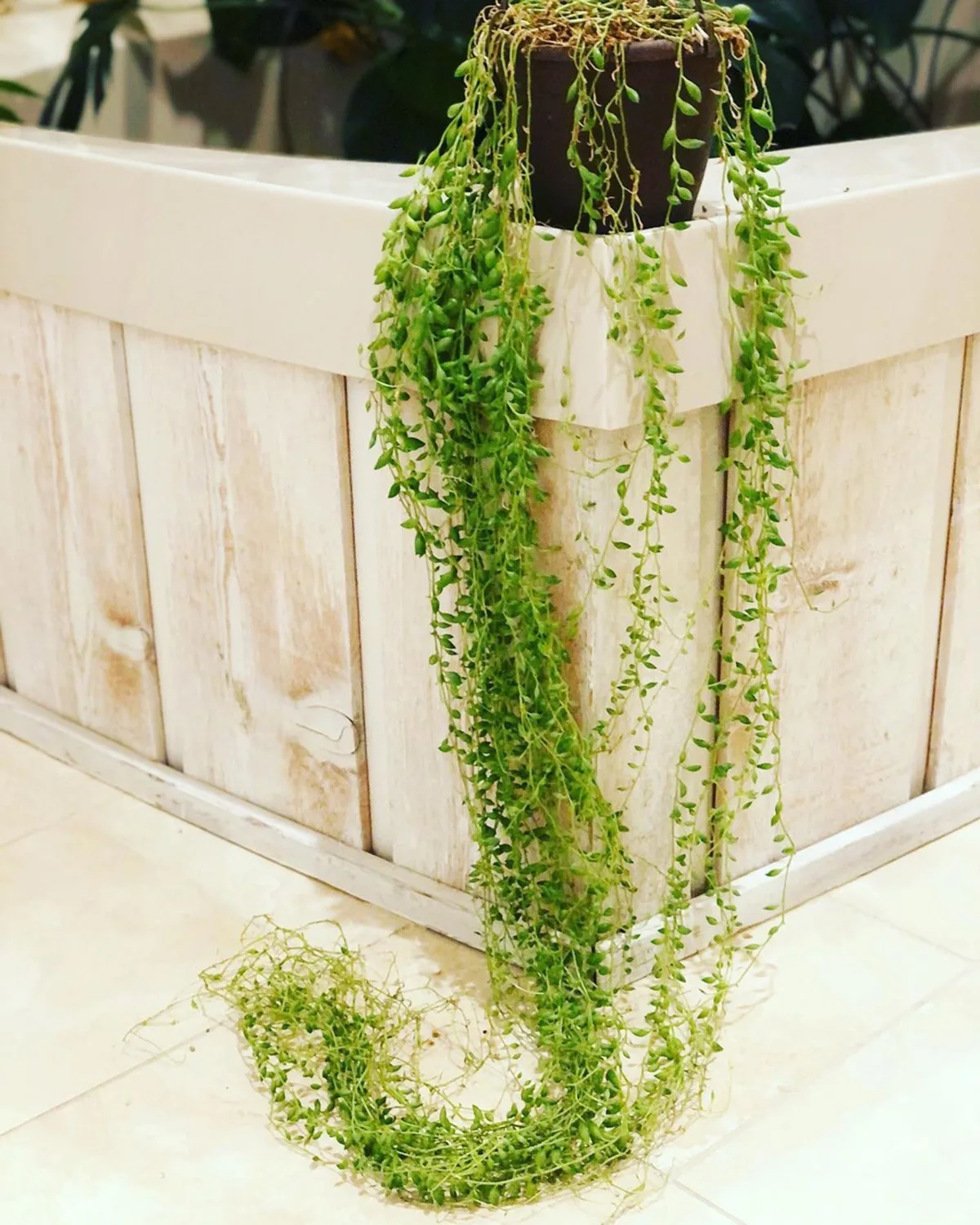
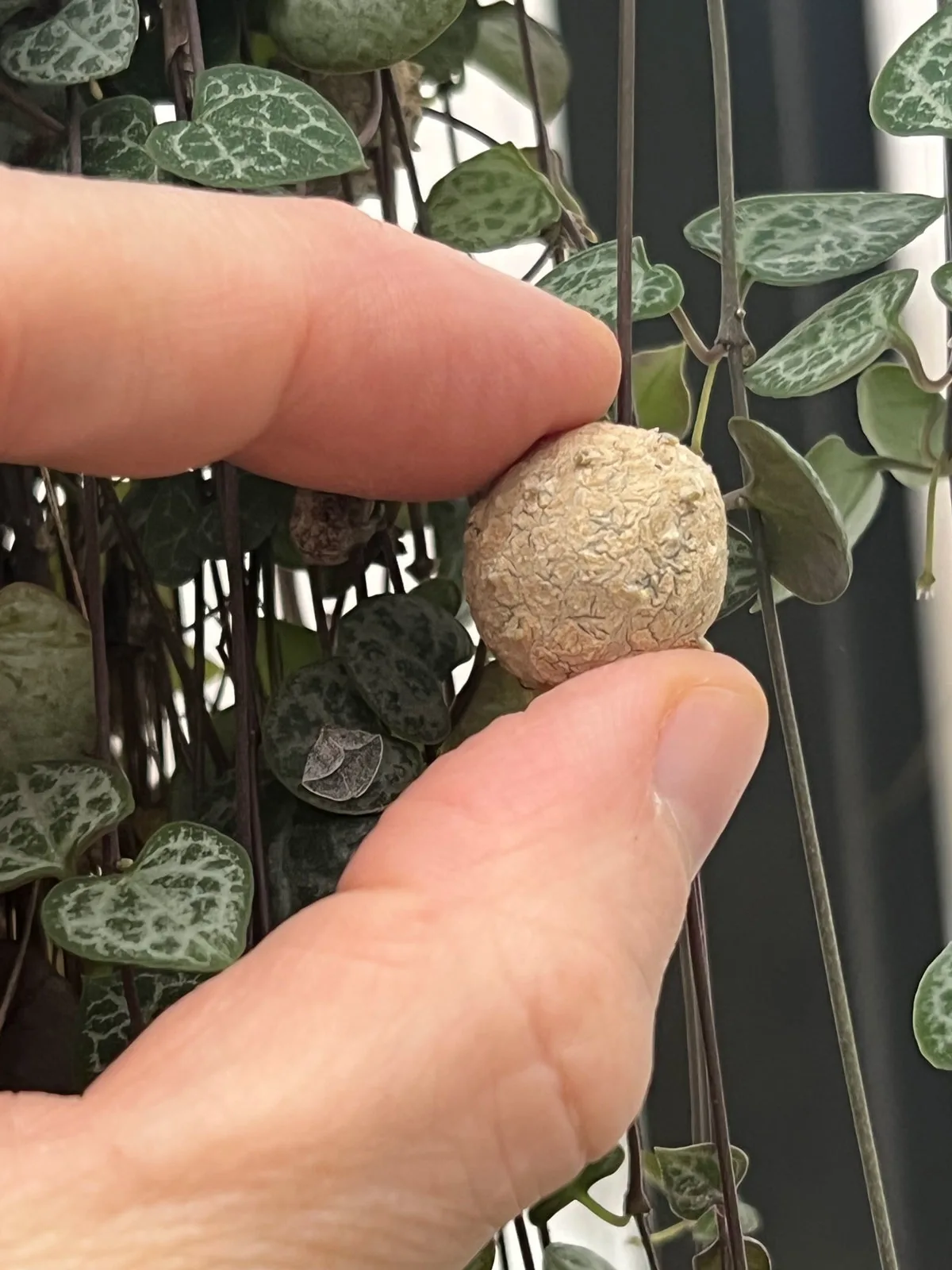
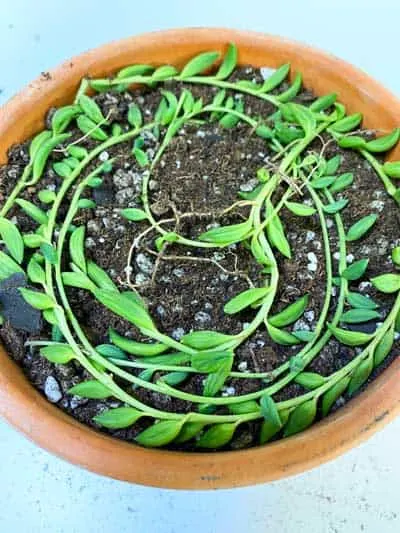
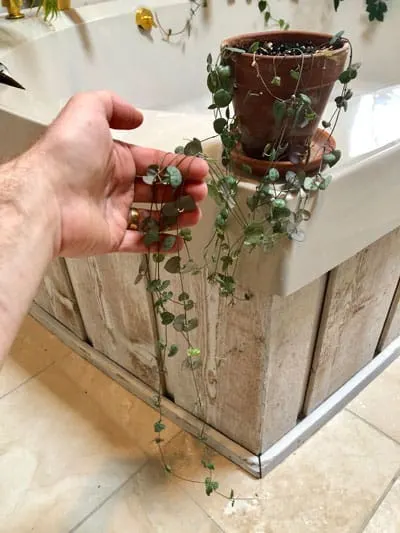
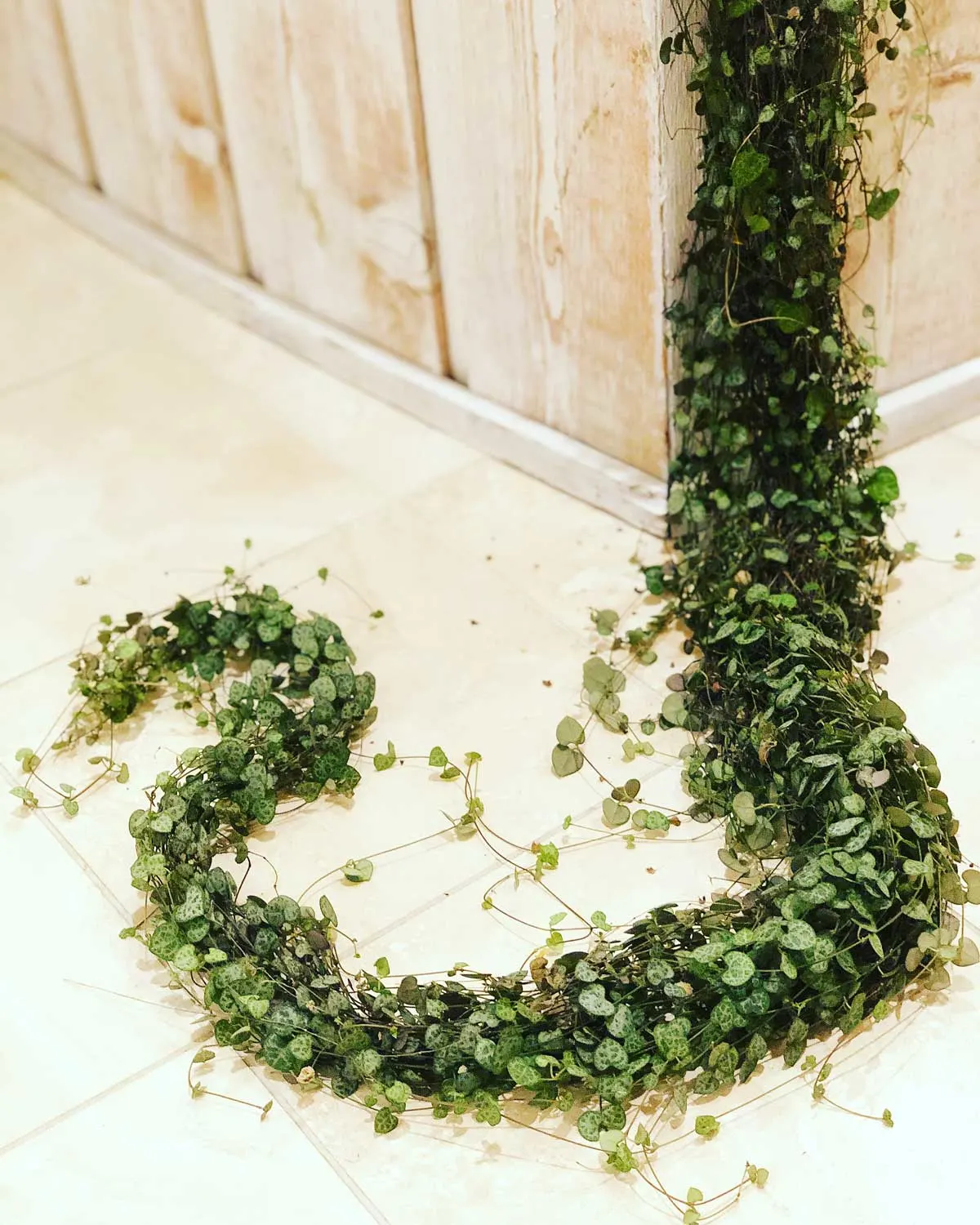
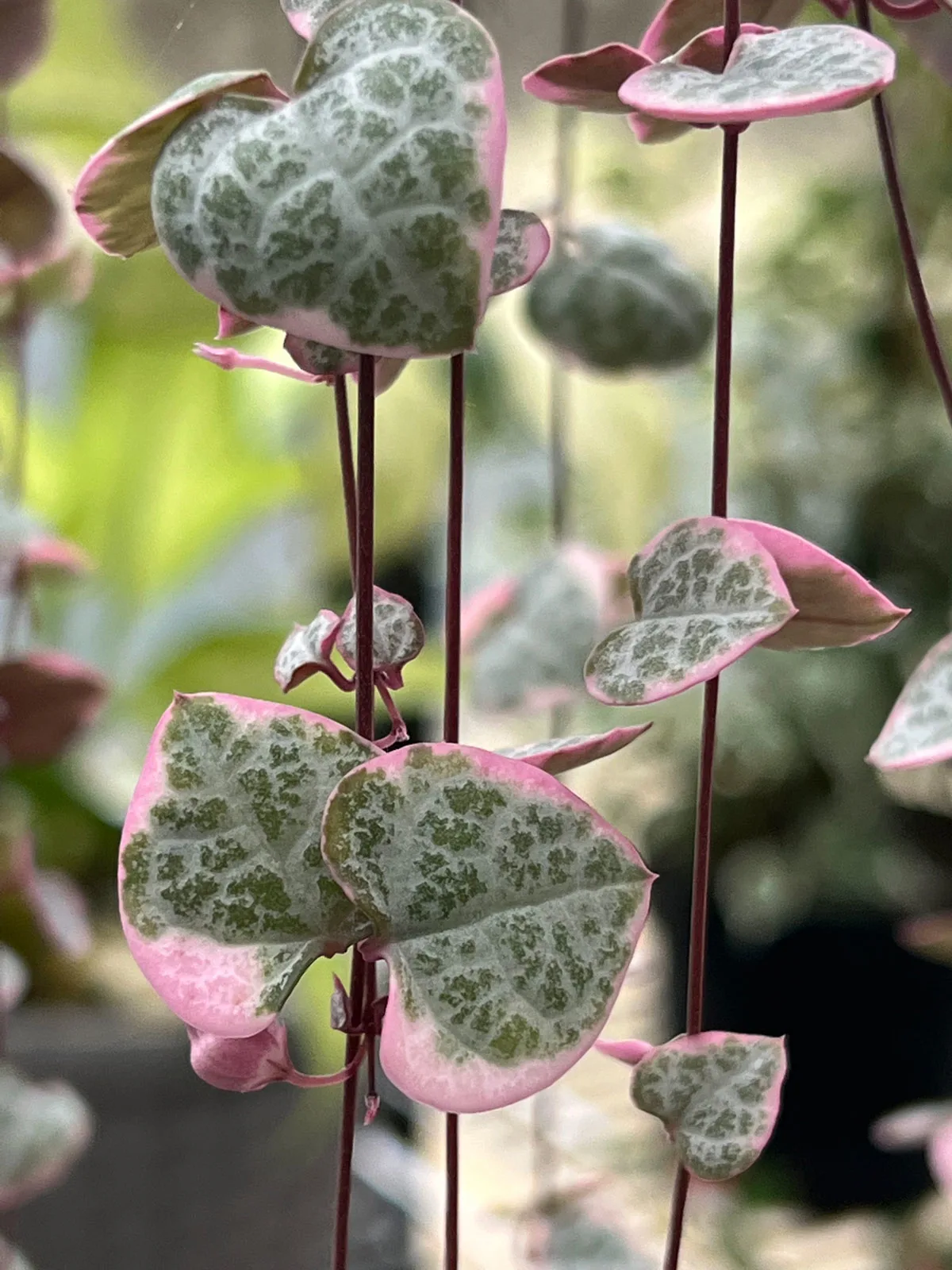
Magritha
Saturday 3rd of May 2025
Beautifully plants. I am interested in hanging plants.price pleas. Thanx Magtitha
Raffaele Di Lallo
Saturday 3rd of May 2025
I don't sell any plants Magritha
Kim
Tuesday 7th of July 2020
Do you fertilize your succulents?